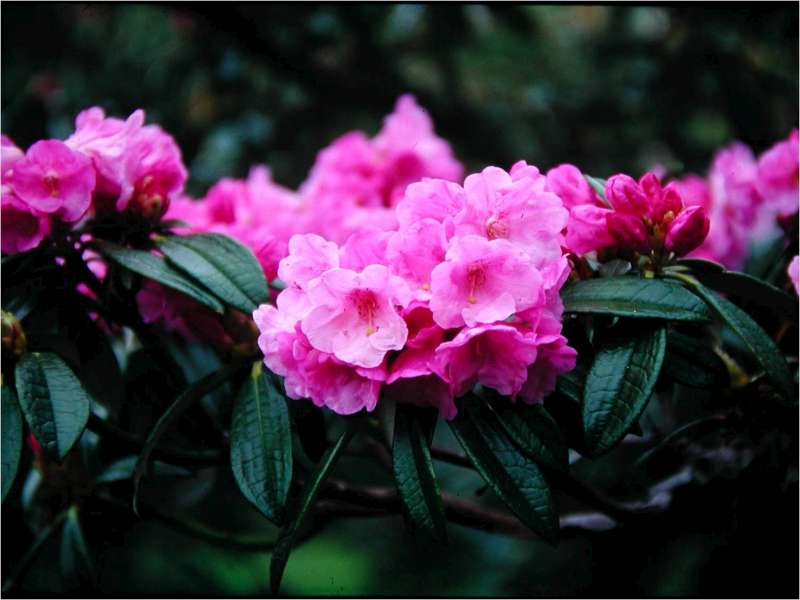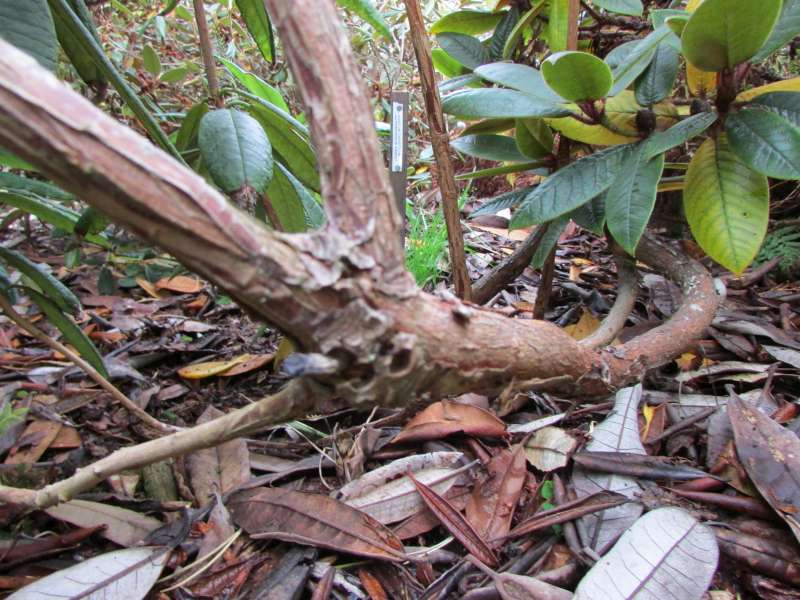Rhododendron x agastum
Billeder af Rhododendron x agastum
Beskrivelse
R. irroratum x R. delavayi is also called R. x agastum.
R. x agastum er flotte tidligt blomstrende stedsegrønne buske. Blomsterne er svagt til dyb rosa eller undertiden hvid rød lyserød, med sædvanligvis plettede blotch. Det er en naturlig hybrid mellem irroratum og arboreum ssp. delavayi og andre kloner er R. arboreum ssp. delavayi x decorum. Sjælden i samlinger og findes kun i V Yunnan og evt i Guizhou, Kina, hvor den forekommer i krat og skove fra 2000 – 3.300m.
Hans Eiberg
Source: ANNALS OF BOTANY 105 (1): 89-100 JAN 2010
Abstract:
Rhododendron (Ericaceae) is a large woody genus in which hybridization is thought to play an important role in evolution and speciation, particularly in the Sino-Himalaya region where many interfertile species often occur sympatrically.
R. agastum, a putative hybrid species, occurs in China, western Yunnan Province, in mixed populations with R. irroratum and R. delavayi. Material of these taxa from two sites 400 km apart (ZhuJianYuan, ZJY and HuaDianBa, HDB) was examined using cpDNA and internal transcribed spacer (ITS) sequences, and amplified fragment length polymorphism (AFLP) loci, to test the possibility that R. agastum was in fact a hybrid between two of the other species.
Chloroplast trnL-F and trnS-trnG sequences together distinguished R. irroratum, R. delavayi and some material of R. decorum, which is also considered a putative parent of R. agastum.
All 14 R. agastum plants from the HDB site had the delavayi cpDNA haplotype, whereas at the ZJY site 17 R. agastum plants had this haplotype and four had the R. irroratum haplotype. R. irroratum and R. delavayi are distinguished by five unequivocal point mutations in their ITS sequences; every R. agastum accession had an additive pattern (double peaks) at each of these sites.
Data from AFLP
Data from AFLP loci were acquired for between ten and 21 plants of each taxon from each site, and were analysed using a Bayesian approach implemented by the program NewHybrids. The program confirmed the identity of all accessions of R. delavayi, and all R. irroratum except one, which was probably a backcross. All R. agastum from HDB and 19 of 21 from ZJY were classified as F-1 hybrids; the other two could not be assigned a class. Rhododendron agastum represents populations of hybrids between R. irroratum and R. delavayi, which comprise mostly or only F(1)s, at the two sites examined. The sites differ in that at HDB there was no detected variation in cpDNA type or hybrid class, whereas at ZJY there was variation in both.



